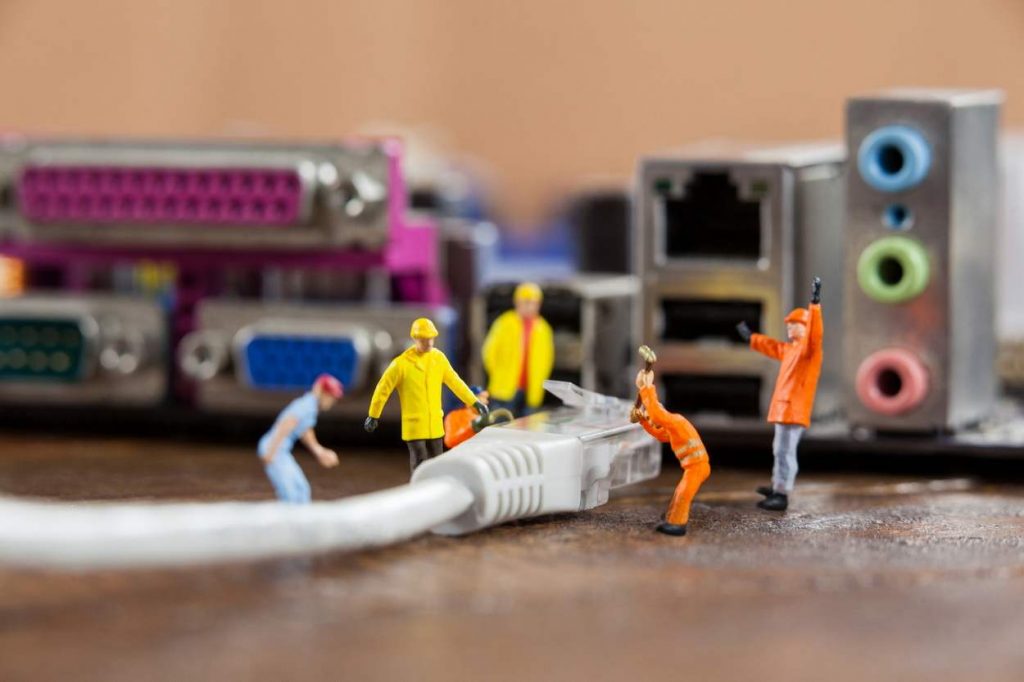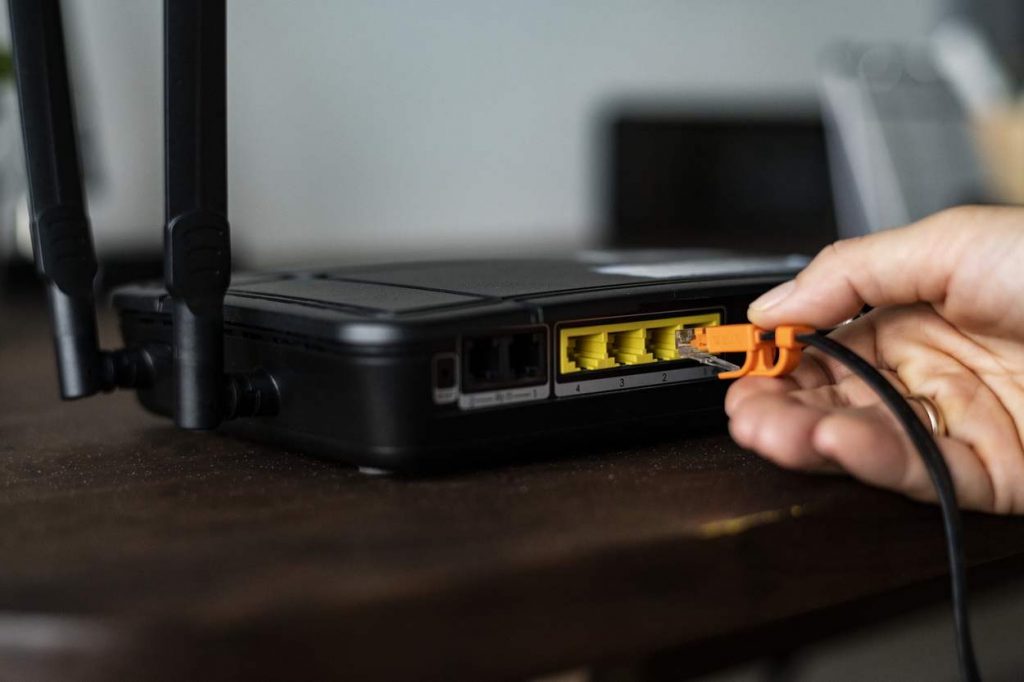How to Increase the Speed of Internet and WiFi Network
Although internet speed and WIFI network speed appear to be comparable, they are two distinct topics that should not be confused. The maximum capacity of the internal network to transport information between nodes within the network is referred to as the Wi-Fi network speed.
Depending on the protocols you employ, this speed may be high or low. The maximum bandwidth given by your service provider is referred to as “Internet speed.”
Because it all depends on the router and the standards that the mobile device supports; a Wi-Fi network can be several times faster than the Internet.
The point regarding Wi-Fi networks that has to be made is that getting the fastest possible speed on a wireless network is dependent on a few number of things.
The speed of sending and receiving information is considerably lowered if there are physical barriers between the transmitter and the receiver; for example, if the transmitters are surrounded by other devices, the neighbors’ wireless network signals are interceptable, or the equipment is not configured properly.
In addition, the router must be in the proper location in order to receive enough internet speed. If you’re going to utilize cellular internet, make sure your phone or tablet can’t get the best signals at the far end of the room, away from windows, or outside.
In such instances, it is preferable to purchase 4G modems and install them in a suitable location where they can effectively receive signals broadcast by telecommunication towers. The optimum location is near open space and windows.
How to Increase the Speed of Internet and WiFi Network
2.4 and 5 GHz bands
The multiple bands that WiFi employs to broadcast and receive signals are referred to as 2.4 and 5 GHz. The fundamental distinction between these bands is that they each have their own unique qualities and employ various bands.
The 2.4 GHz frequency is best for rates of 450 to 600 megabits per second. The 5 GHz bandwidth of WiFi, on the other hand, allows a maximum speed of 1300 Mbps. The wireless standard supported by the router is one of the most critical factors in achieving such high speeds.
In the best-case scenario, utilizing the 802.11ac standard, you can get a speed of 5 GHz, but only the mobile phones you’re using can handle those standards, and their antennas aren’t confined to the 2.4 GHz range.
Because its use is not confined to Wi-Fi, the 2.4 GHz band is highly congested and saturated in some locations. The 2.4 GHz band is used by cordless phones, automatic parking door openers, microwaves, and a variety of other goods.
Because its waves may travel longer distances and penetrate past barriers and walls, the 2.4 GHz band is employed. If you have a large work space and want WiFi waves to pass through barriers with the least amount of rain, it is preferable to use the 2.4 GHz band.
The biggest disadvantage of the 2.4 GHz band is wave interference, which prolongs the waiting time. The 5 GHz band, on the other hand, has a lower density than the 2.4 GHz band and provides a more reliable connection and faster speeds, but it has trouble penetrating barriers and walls due to its narrow bandwidth: especially for really thick walls, its coverage range is shorter than that of the 2.4 GHz band.
To make the most of the 5 GHz bandwidth, several businesses utilize a bandwidth extender. Other options include Wi-Fi network systems, which offer good coverage but come at a premium cost.
Multi-band routers
The majority of today’s routers are multi-band. A dual-band router can broadcast signals at both 2.4 and 5 GHz, providing you with two different Wi-Fi networks and allowing you to use both bands. Dual-band routers allow you to use two separate features on two different bands at the same time.
The simultaneous usage of two bands allows you to build two independent Wi-Fi networks, each with its own SSID, at 2.4 and 5 GHz. Three-band routers broadcast three networks at the same time: two 5 GHz transmissions and one 2.4 GHz signal.
This is done to reduce network congestion and is better suited for organizations and customers that want to broadcast large multimedia files over the 5 GHz band.
Multi-band routers have a number of other advantages. If you have appropriately configured network cards that support two bands, the network card can automatically switch when a suitable band connection is formed.
Check the list of devices connected to the router
If you think your bandwidth or traffic is running low, check devices connected to the router. Look for the area labeled “connected device,” or “Device List,” in the router’s settings (on some routers, there is a section called “Security,” which contains the Access Control option).
This section displays a list of connected online devices, together with information such as the connection type (wired or wireless), MAC address, IP address, and device name.
Ethernet is still the best option

It’s a good idea to connect gadgets like smart TVs, PCs, and network storage via Ethernet if it’s possible without any special wiring issues. Ethernet-based communications avoid the difficulties associated with Wi-Fi, such as signal latency and interference, and offer a reliable and fast connection.
A wave repeater is a device that extends the range of a Wi-Fi network.
If you’ve just acquired a router that supports 802.11ac standard routers and mobile devices (such as the Se5 tablet), but you’re still experiencing signal problems, a signal extender may be worth considering.
By repeating the signal, the amplifiers steer the WiFi waves to the house’s blind regions.
The expander’s position is also crucial. The amplifier should be located where the signals are weak or where the strongest signals should be received.
Configure the router correctly
In situations with several Wi-Fi networks, most routers set the frequency to 2.4 GHz on channel 6, which might cause interference. To address this problem, use channels 1, 11 or 36. To access additional channels on the 5 GHz band, it’s recommended to utilize the 802.11ac or 802.11b/ac protocol.
If the channel and channel width settings include an “Auto” option, enable it so that routers and network cards will automatically switch to the optimal channel.
The orientation of the antennas has a considerable impact on the quality of the wireless network.
If your router has numerous antennas, make sure they’re all perpendicular to one another. Receiving signals between a router and a receiving device reach their maximum power when the receiver and receiver are at the same level, according to Al-Watt, a former Apple Wi-Fi network engineer.
Also, the router should be placed in the middle of the home or in the living room. Remember that signals go up and down, so if the router is at a higher elevation, the devices will receive the waves better, similar to how telecommunication towers work.
Signal strength diagnostic tools will help you figure out what’s causing your blind spots.
Interference is a problem with WiFi communications. Android Network Analyzer Pro is one of the best signal strength diagnostic applications available, providing information on signal strength, channel utilized, location, data transfer speed, network name, and more for both the 2.4 and 5 GHz bands. The same information is available for the cellular network.
Increase the WiFi range through manual tricks (DIY)
You may make a satellite dish out of a sheet by cutting it into a rectangle and placing the router antenna vertically in the center. The Wi-Fi signal strength is over 1.5 times greater than the default range when using this strategy.
Remove devices connected to WiFi
It is impossible to prevent all devices from joining the WiFi network. When many devices are connected to a Wi-Fi network, the bandwidth is shared among them. To resolve this issue and gain optimal network performance, you must locate and delete any devices connected to the WiFi network.
Prevent unnecessary applications from consuming bandwidth
Many programs use WiFi to connect to the Internet and use bandwidth. If you have apps on your computer or smartphone that use a lot of bandwidth and cause the Internet to slow down, you should uninstall them. Make sure your phone’s Wi-Fi is turned off if you wish to utilize Wi-Fi on your computer.
Turn the old router into a repeater
A repeater is a device that amplifies a signal by repeating it. You may use your old router as a repeater to extend the range of your WiFi signal.
Control the network by prioritizing traffic
Quality of Service (QoS) is a network feature that prioritizes specific types of traffic. Devices, certain apps, and specific types of traffic can all be used to determine prioritization. In busy networks, the problem of limited bandwidth is mitigated by the quality of service. QoS classifies traffic by looking at data from packet headers or data frames of various sorts.
Use router management programs
Some router makers have developed specific programs for phones and tablets that allow users to better manage their routers. By assessing signal strength, channel interference, and discovering blind spots and poor signals on the phone, these apps can help you decide where the optimum area to install the router is. If the router does not offer such an application, Android phones can use free third-party apps such as WiFi Analyzer.
Use the MAC address filtering feature

A MAC address is assigned to each device that connects to the network. The meta-address is used to identify networked devices, but it also has additional functions. By filtering the address, you may prevent some devices from connecting to the network.
Look for the MAC Filtering option in the router settings to take advantage of this useful function.
A new access point
Turning an outdated Wi-Fi router into a basic wireless access point is the best thing you can do with it if you no longer need it. Turning an outdated router into a simple access point is the quickest approach to fix the problem of weak signal if you don’t want to damage the aesthetic of your home with Ethernet wires.
To begin, connect the old router’s WAN port to the new router’s LAN port, enter the old router’s settings, and choose the router’s access point mode.
Bridge mode is the name given to this feature on some routers. Another thing you need to do is disable the old router’s DHCP server. The DHCP server’s job is to issue IP addresses to devices that want to join the network on a dynamic basis.
If you don’t select the above option, you’ll end up with networks within your present network, which will cause a slew of issues. The IP address you used to view the router settings will no longer be utilized. The router must then be rebooted, and the Ethernet wire must be switched from the WAN to the LAN port.
To retrieve the old router’s IP address, go to the new router’s configuration settings and note down the old router’s name and IP number in the Network Devices section. To transmit the waves to further places, you must now set the second router in the proper location.
It is preferable to use the same SSID and password for the old wireless router as for the current wireless network. Naturally, some users choose to create various SSIDs so that they can quickly connect to the best Wi-Fi network whenever they have a problem.
External Resources:
- Why Channels 1, 6 and 11?
- Channel Planning Best Practices for Better Wi-Fi
- How to Boost Your Wi-Fi Speed by Choosing the Right Channel
- Old router as switch with DHCP disabled
- Disable or remove the DHCP Server service installed on any domain controllers
- Best Practices for Using Multiple Network Interfaces
- Troubleshooting LAN Switching Environments
- How to See Who Is Connected to Your Wireless Network

